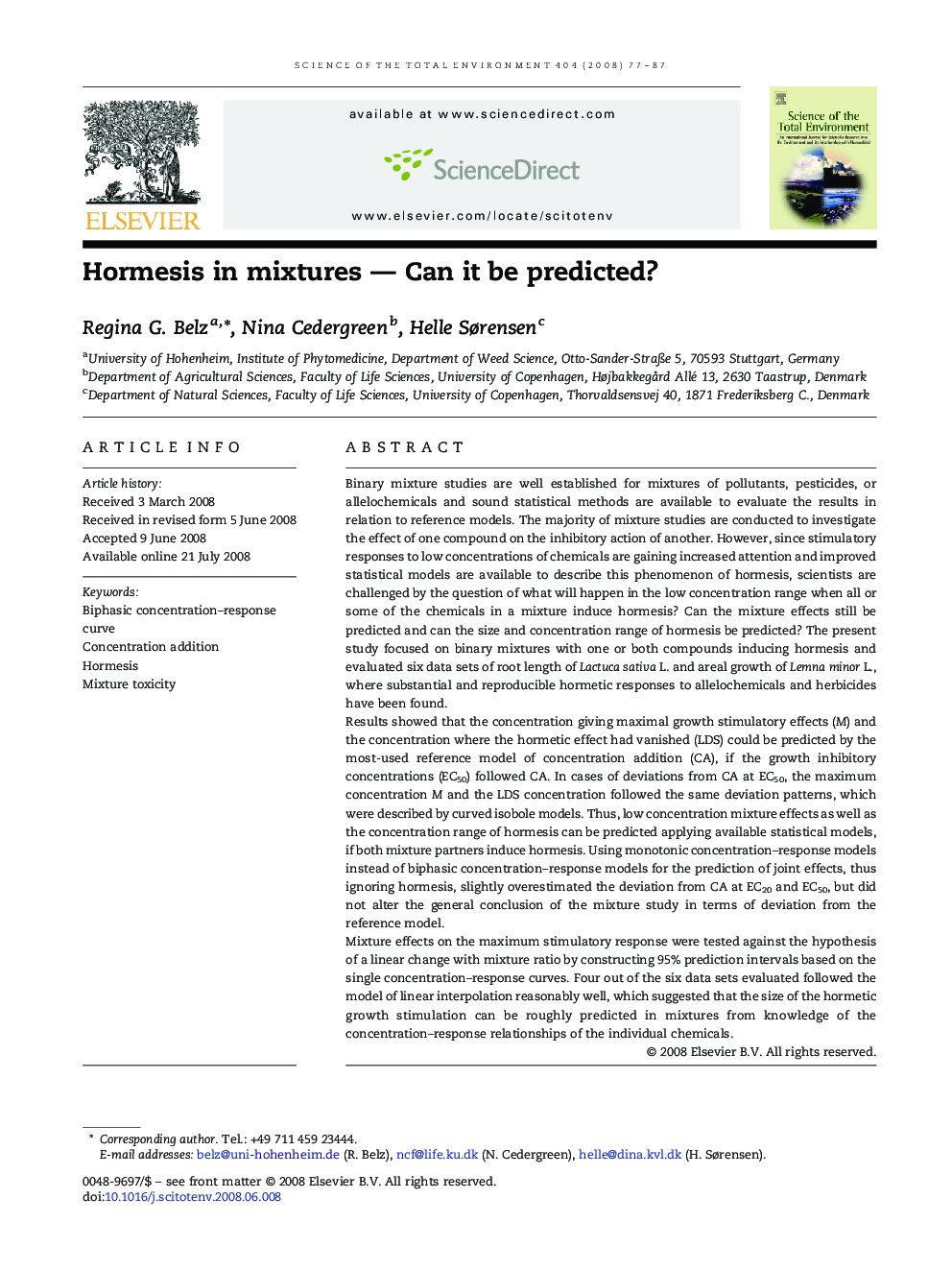| کد مقاله | کد نشریه | سال انتشار | مقاله انگلیسی | نسخه تمام متن |
|---|---|---|---|---|
| 4432354 | 1619914 | 2008 | 11 صفحه PDF | دانلود رایگان |

Binary mixture studies are well established for mixtures of pollutants, pesticides, or allelochemicals and sound statistical methods are available to evaluate the results in relation to reference models. The majority of mixture studies are conducted to investigate the effect of one compound on the inhibitory action of another. However, since stimulatory responses to low concentrations of chemicals are gaining increased attention and improved statistical models are available to describe this phenomenon of hormesis, scientists are challenged by the question of what will happen in the low concentration range when all or some of the chemicals in a mixture induce hormesis? Can the mixture effects still be predicted and can the size and concentration range of hormesis be predicted? The present study focused on binary mixtures with one or both compounds inducing hormesis and evaluated six data sets of root length of Lactuca sativa L. and areal growth of Lemna minor L., where substantial and reproducible hormetic responses to allelochemicals and herbicides have been found.Results showed that the concentration giving maximal growth stimulatory effects (M) and the concentration where the hormetic effect had vanished (LDS) could be predicted by the most-used reference model of concentration addition (CA), if the growth inhibitory concentrations (EC50) followed CA. In cases of deviations from CA at EC50, the maximum concentration M and the LDS concentration followed the same deviation patterns, which were described by curved isobole models. Thus, low concentration mixture effects as well as the concentration range of hormesis can be predicted applying available statistical models, if both mixture partners induce hormesis. Using monotonic concentration–response models instead of biphasic concentration–response models for the prediction of joint effects, thus ignoring hormesis, slightly overestimated the deviation from CA at EC20 and EC50, but did not alter the general conclusion of the mixture study in terms of deviation from the reference model.Mixture effects on the maximum stimulatory response were tested against the hypothesis of a linear change with mixture ratio by constructing 95% prediction intervals based on the single concentration–response curves. Four out of the six data sets evaluated followed the model of linear interpolation reasonably well, which suggested that the size of the hormetic growth stimulation can be roughly predicted in mixtures from knowledge of the concentration–response relationships of the individual chemicals.
Journal: Science of The Total Environment - Volume 404, Issue 1, 1 October 2008, Pages 77–87